Scientific name Phylloxeridae Rank Family | ||
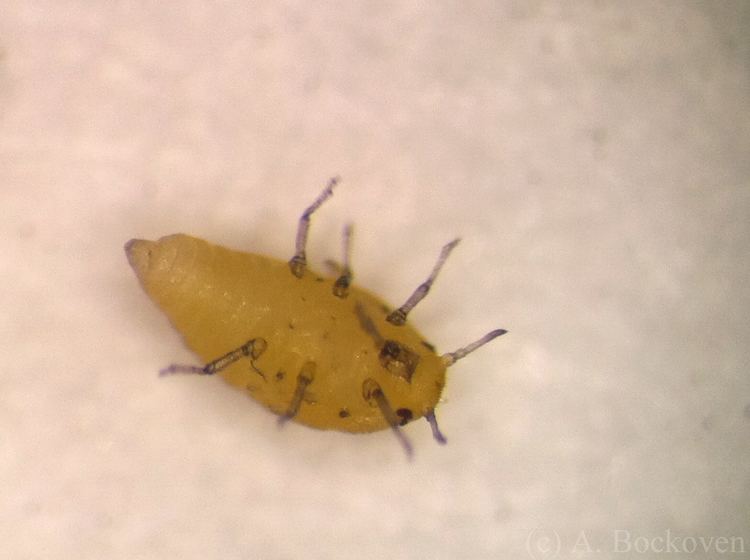 | ||
Similar Insect, Phylloxera, True bugs, Adelgidae, Sternorrhyncha | ||
Phylloxeridae is family of Hemipterans closely related to aphids.
Contents
- History and distribution
- Behavior and ecology
- Economic importance
- Morphology
- Taxonomy phylogeny
- References
The Phylloxeridae is a small family of plant-parasitic hemipterans with only 75 described species. This group comprises two subfamilies (Phylloxerininae and Phylloxerinae) and 11 genera with one that is fossil. The genus type is Phylloxera. The Phylloxeridae species are usually called Phylloxerans or Phylloxerids.
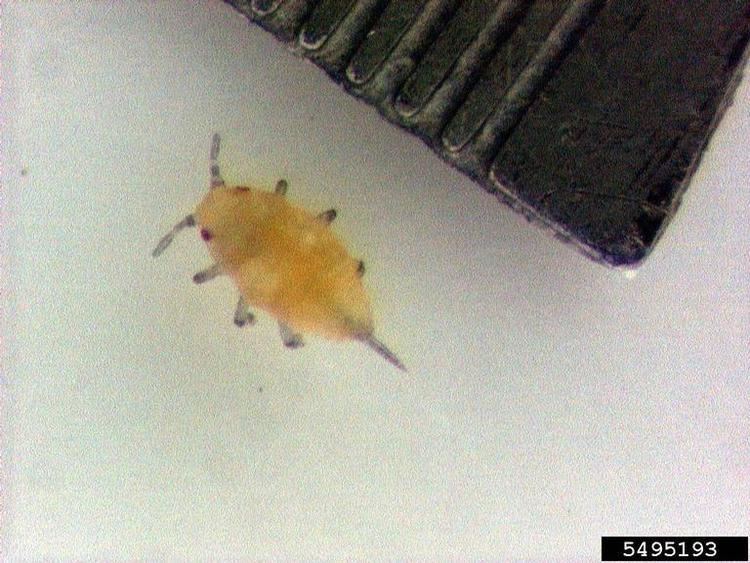
History and distribution
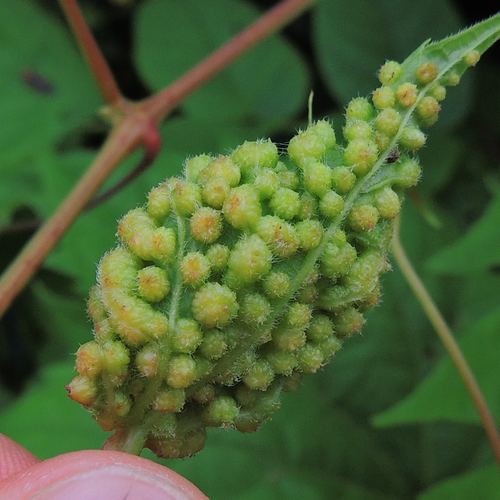
The first record of species of the family was in Aphidoidea by Latreille, 1802. In 1857 Herrich-Schaeffer described the family and named this group ‘Phylloxeriden’. Lichtenstein, was the first to use the word ‘Phylloxeridae’ in 1883. They have a worldwide distribution but seem to have originated from a moderate climate since they are more diverse in temperate climates and their adaptation to tropical life probably is of a secondary nature.
Behavior and ecology

Phylloxerans are aphid-like insects that are parasitic hemipterans on deciduous trees and perennial fruit crops. They feed on leaves and roots and are cecidogenic which means they induce galls to form. They have very complex life cycles with cyclical parthenogenesis and host alternation. Basically, here is briefly what happens in the life cycle: A female fundatrix hatches from an overwintering egg on the primary host which is usually a woody plant before bud burst stimulating a gall to form on the young leaves. Winged offspring in the following or third generation migrate in spring to the secondary host (usually an herbaceous). Then, many winged and wingless generations may be produced on the secondary host before winged migrants return to the primary host in autumn. Males and mating females mate on the winter host and produce overwintering eggs.
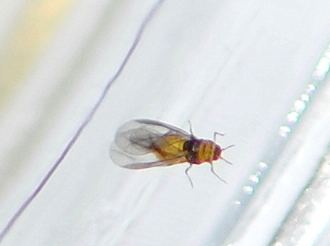
In the Phylloxeridae family, some species are holocyclic meaning they produce both asexual and sexual generations while some are anholocyclic then producing only asexual generations. Species of this family live within the galls on the host plants and also in the crevices of barks.
Economic importance
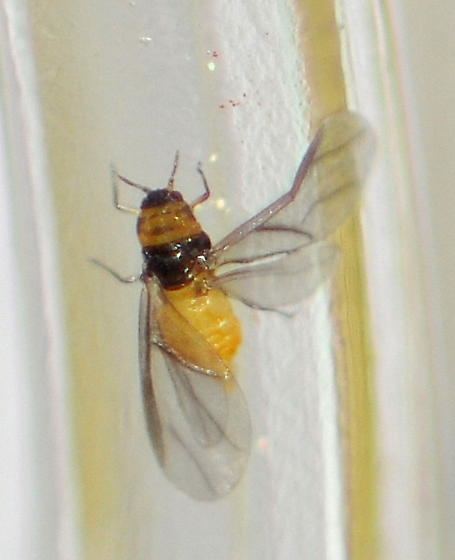
Phylloxerids can transmit diseases to plants. Their importance is even more perceptible historically. In fact, Daktulosphaira vitifoliae known as the grappe phylloxera is considered as the most economically important insect pest of commercial grapevines Vitis worldwide. In the late 19th century, the phylloxera epidemic destroyed almost all the European grapes and they could only fix the problem by planting grapes from the US, then grafting European grapes onto American roots.
Morphology
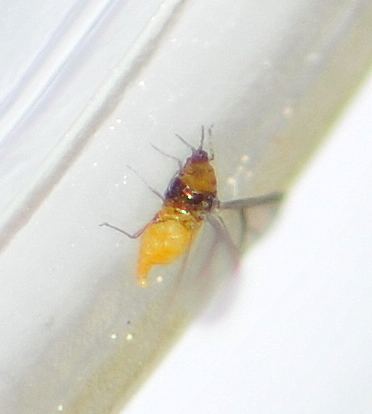
The Phylloxeran species are very small to minute insects. Besides, there is a high polymorphism in the Phylloxeridae family making it really hard sometimes to identify its members. Also, they can pretty easily be confused to related insects such as Adelgids and true Aphids. The most important features used to tell them apart from their relatives and from other insects are the wings’ venation, the ovipositor and some characteristics of their antennae. Phylloxerans have a three-segmented antenna in all forms (both adults and immature). The Wings held flat over the body at rest and the Cu1 and Cu2 of the front wings are stalked at the base. The flagellum always ends in a sensorium (or rhinaria) and adult females can have one or two additional sensorial on the flagellum. Egg laying females and males have vestigial mouthparts and are wingless. Concerning the immature, the nymphs resemble adults but never have the secondary sensorium. Also the immature of the sexuales have a unique non-feeding pupiform larva. You can distinguish Phylloxerans from Adelgids by the fact that they have a vulva instead of a sclerotized ovipositor and usually lack the wax glands or plates found in Adelgids. They can also be distinguished from Aphids because they have 3 veins while Aphids have 4-6 veins.
Taxonomy/ phylogeny
Phylloxeridae is part of the order Hemiptera and suborder Sternorrhyncha. But there is a lot of controversy when it comes to its position and phylogeny within this lineage especially in regard to its relatives namely the Adelgids (Adelgidae) and Aphids (Aphididae). The following quote is an illustration: “Almost as many classifications of aphids have been proposed as there have been practicing taxonomists”. Aphids here include Adelgidae, Aphididae and Phylloxeridae. In the past these three families mentioned above have been placed together in the same superfamily Aphidoidea.
Generally, Phylloxeridae is placed together with Adelgidae in the superfamily Phylloxeroidea. In fact, bionomical similarity such as the oviparous parthenogenetic females observed in these two groups and morphological characters such as the reduction of forewing venation, and reduction of antennal segments have been used in the study of their phylogeny suggesting that they are closely related and leading to their placing as sister groups in Phylloxeroidea. Phylloxeridae together with Adelgidae form the oviparous aphids group which is monophyletic and is sister group to Aphidoidea (other aphids).
However, most recent studies using both morphological and molecular data to discuss the phylogeny and evolutionary history within the Sternorrhyncha lineage suggest that representatives of Adelgidae, Aphididae and Phylloxeridae have evolved independently and should not be combined in superfamilies. The debate is still open and more research is needed to clear the Sternorrhyncha phylogeny out.
